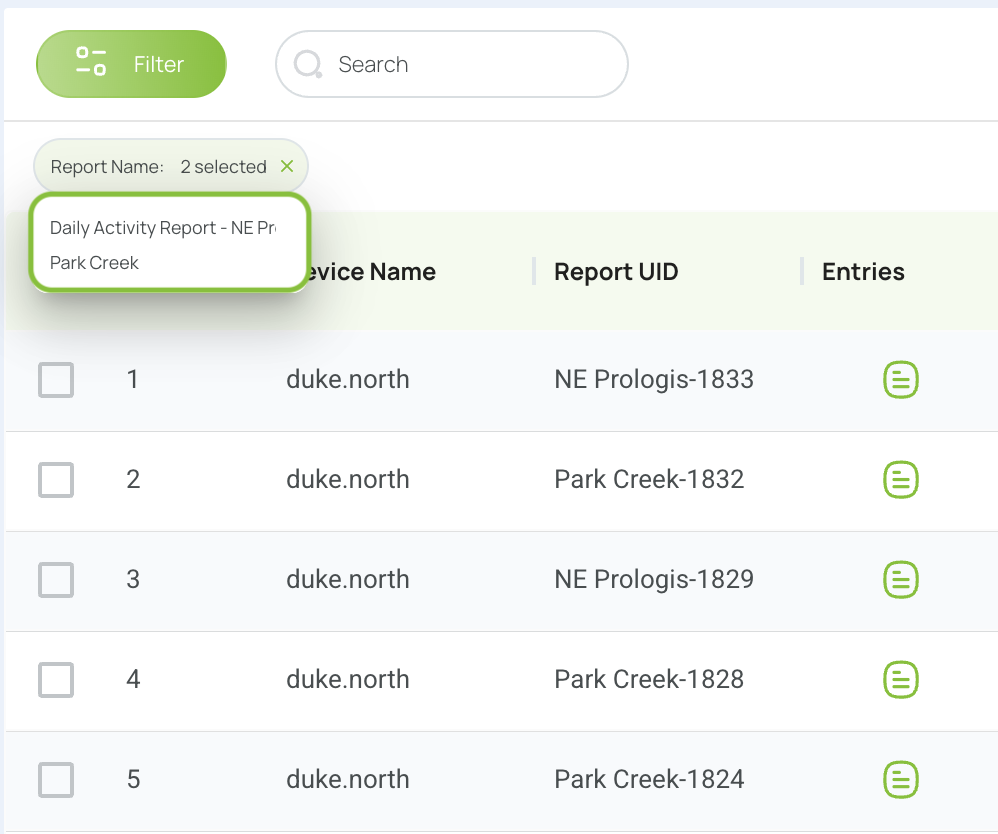Filters
Learn how to filter data in mobohubb using filters. This guide explains the difference between these filtering methods, shows you how to apply multiple filters at once, and reveals how to remove or switch between filter types.
In this guide you'll learn
- Where to find and open the filter panel on any data grid
- The difference between Quick and Advanced filters—and when to use each
- How to apply, stack, and preview multiple filter rules
- Ways to save a filtered layout as a reusable view and how to restore defaults
Filters
Filters in mobohubb let you narrow, organize, and quickly surface the needed data—without exporting to Excel or running extra reports.
Access Filters
Click the Filter button (upper-left of most tables).
Here, for example, we’re on Report Data:
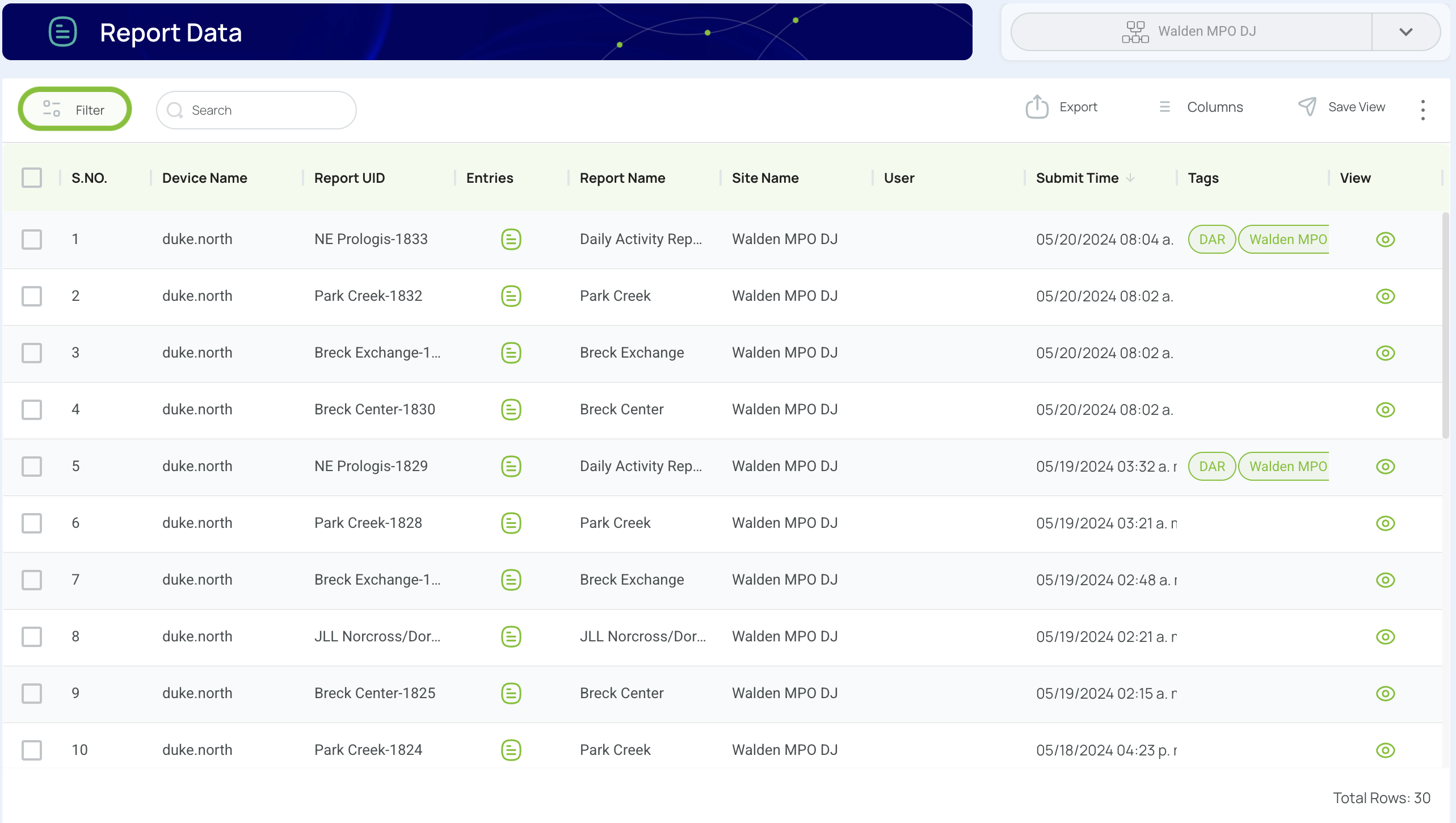
A pop-up appears showing every filter available on that screen.
Heads-upFilter options change from page to page. A Users view will expose very different filters than Report Data—so each screen stays relevant to its own data set.
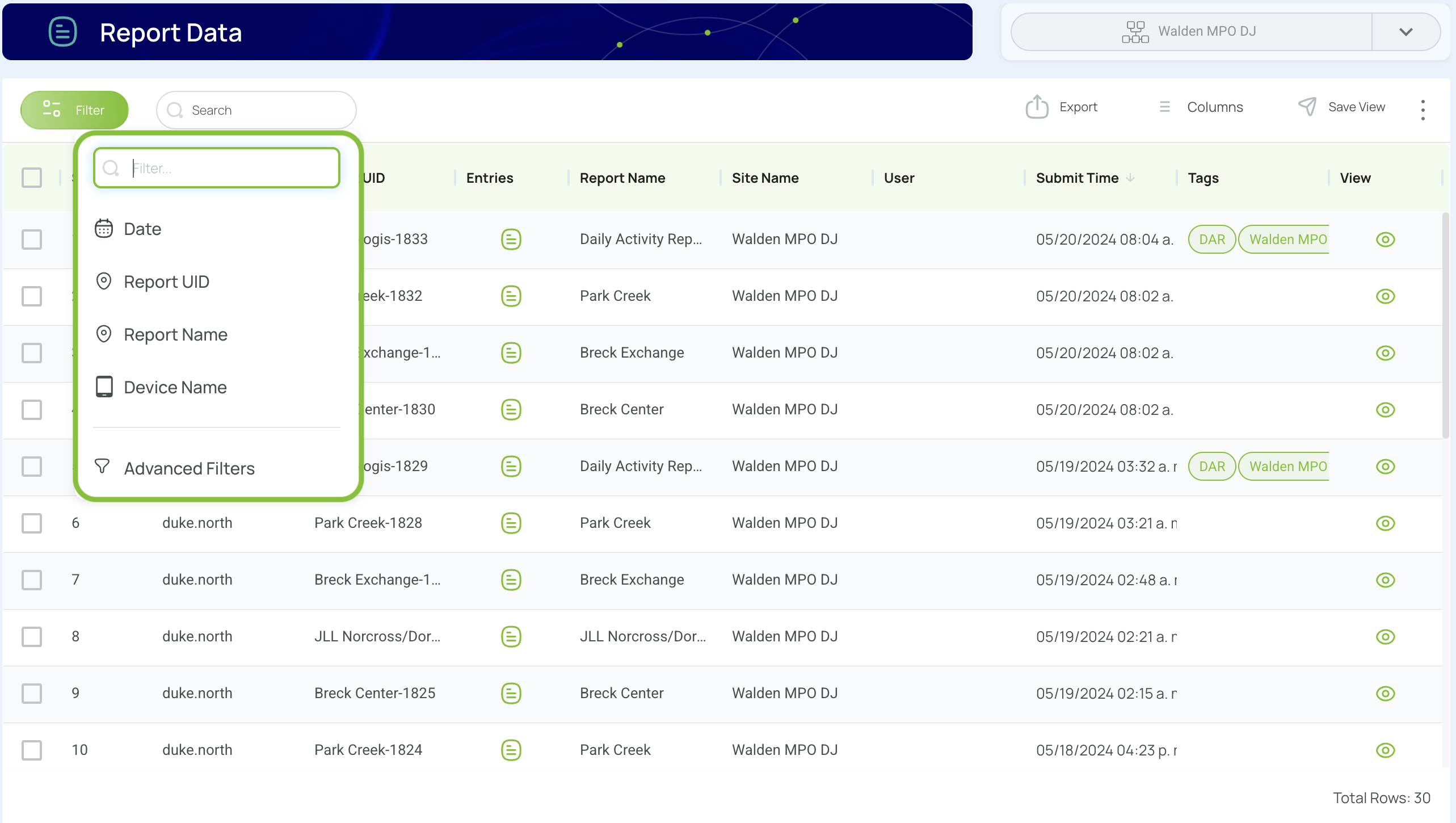
Quick Filters
Choose a category (e.g., Report Name).
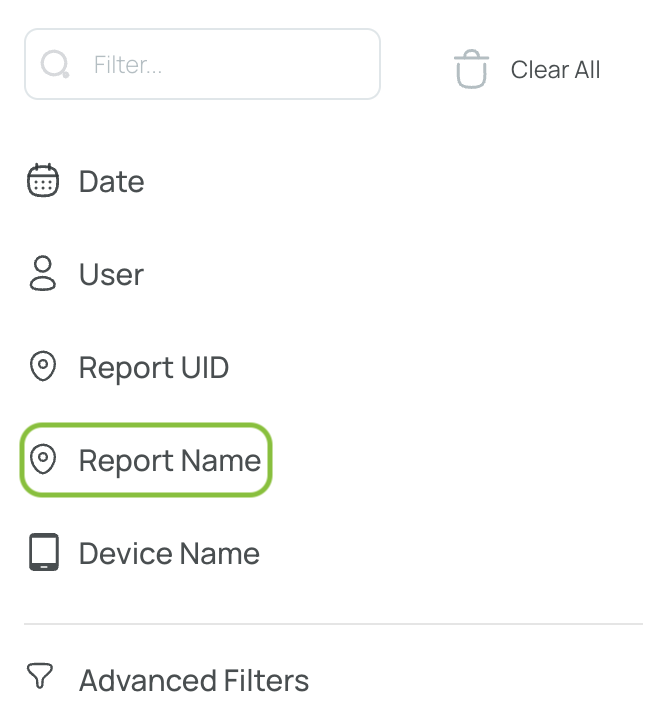
Quick filters
Begin typing to locate a value, then tick one or several checkboxes.
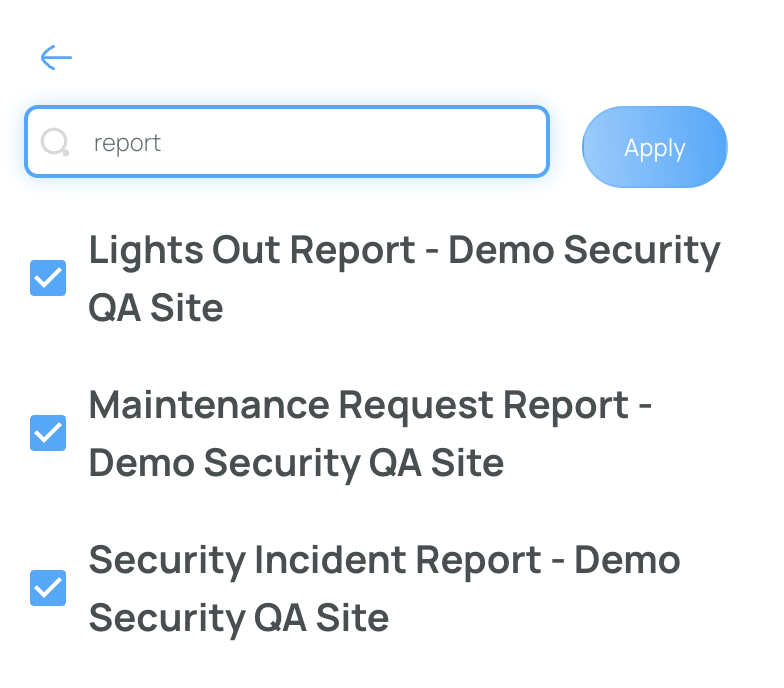
Click Apply or click somewhere else on the page to update the list.
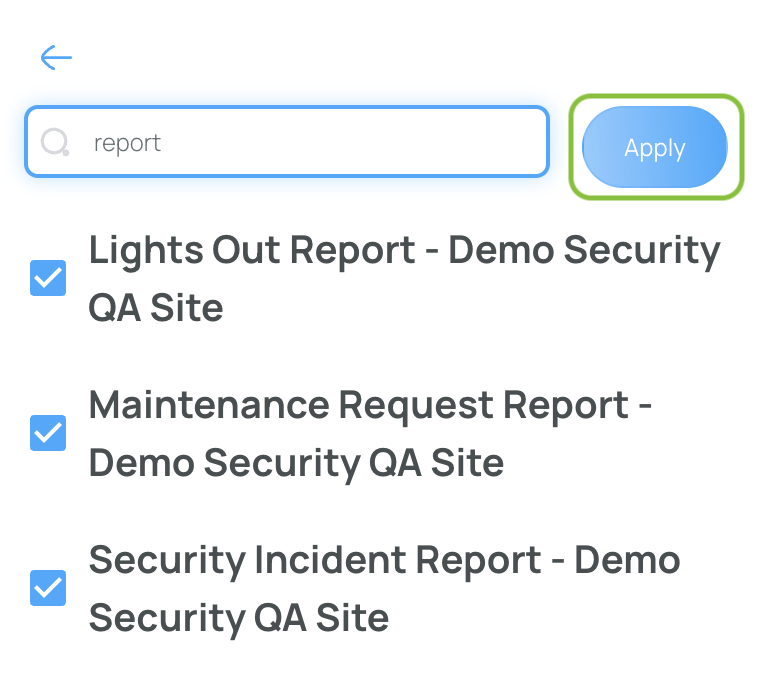
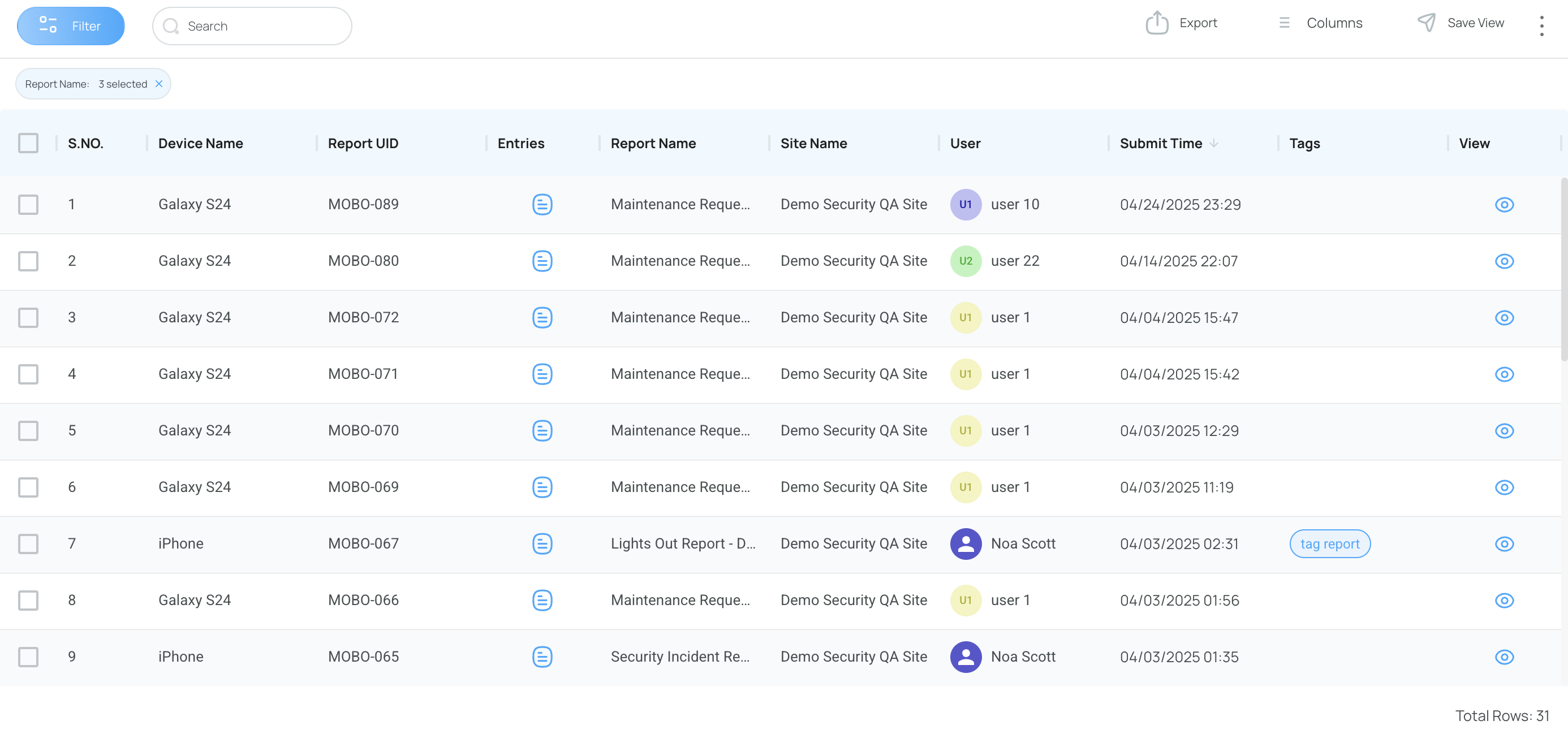
Updated list
Advanced Filters
You can narrow your results even more by switching to Advanced filters.
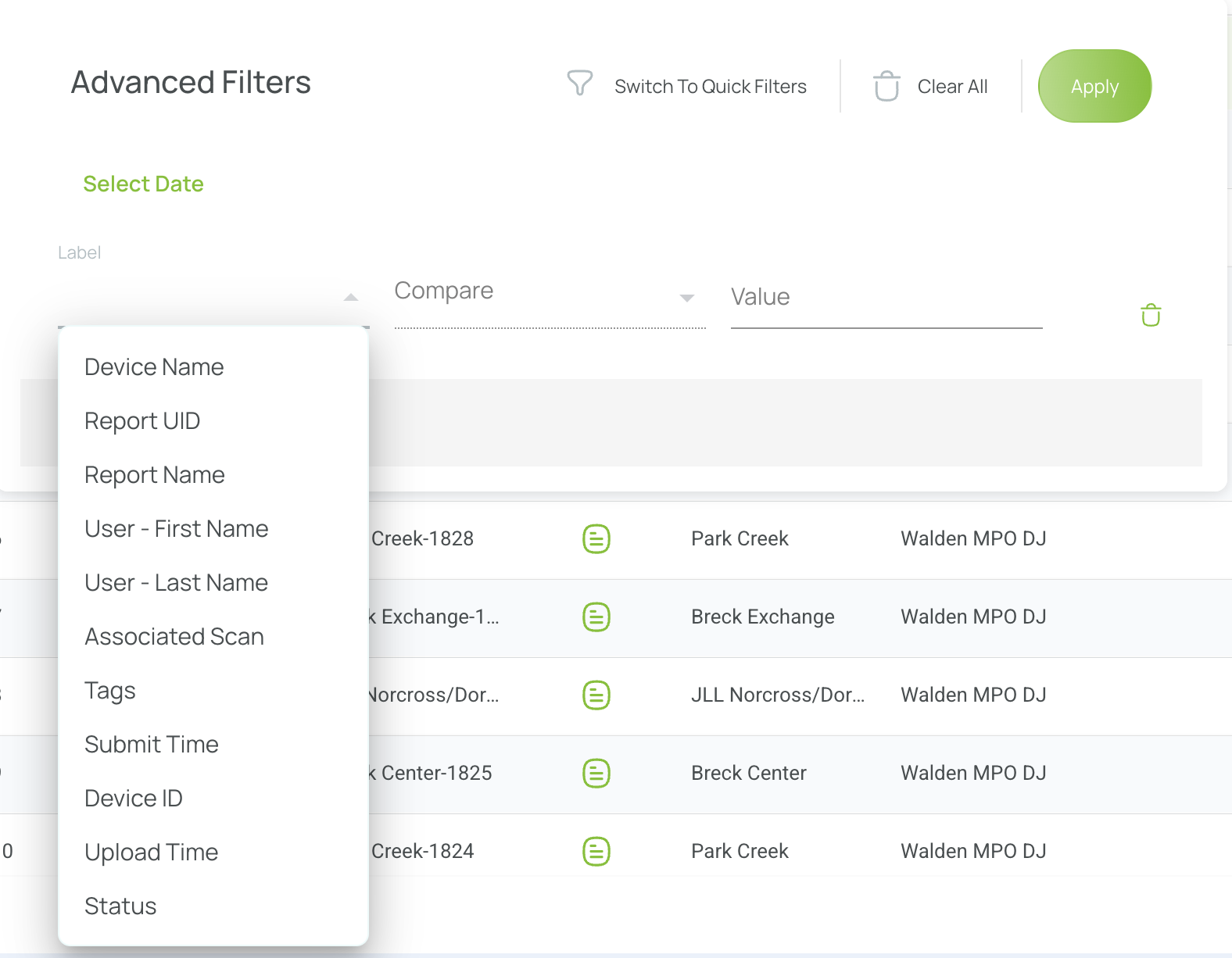
Advanced filters in Report Data
Define your conditions, then click Apply.
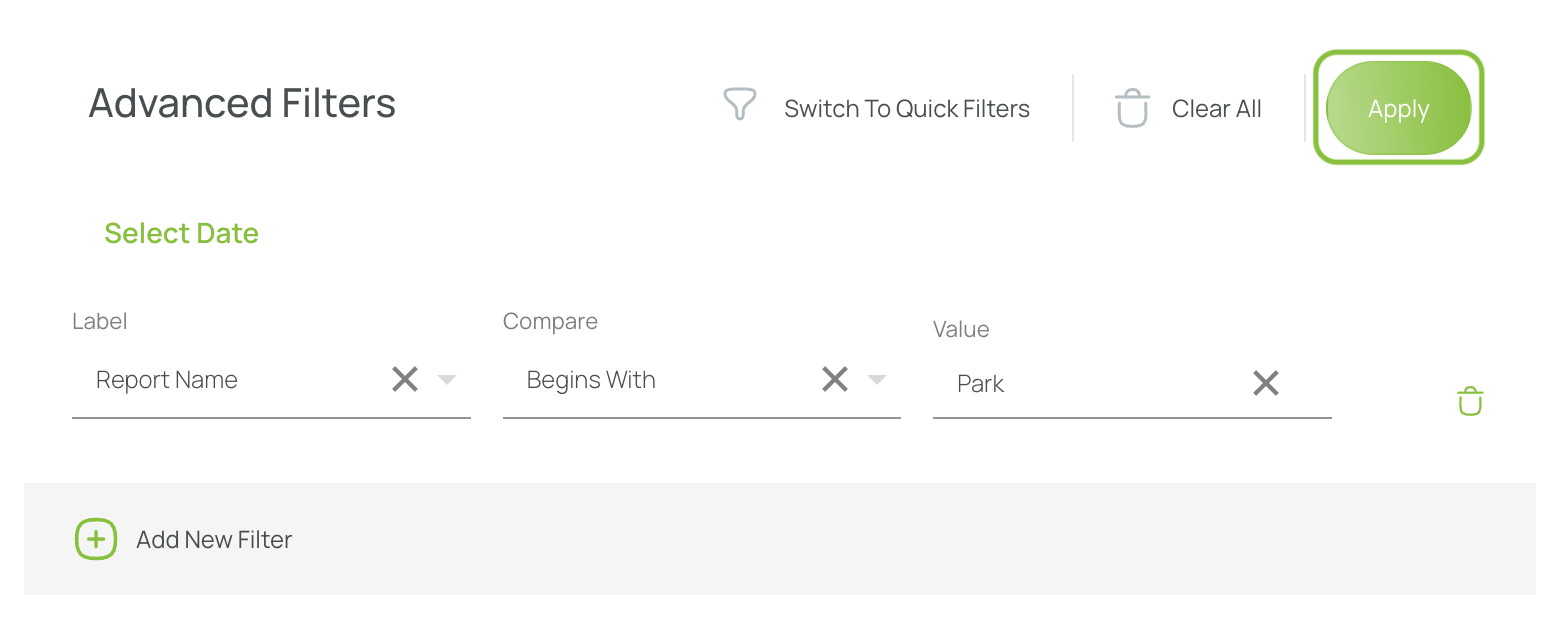
Now the table shows only the rows that match.
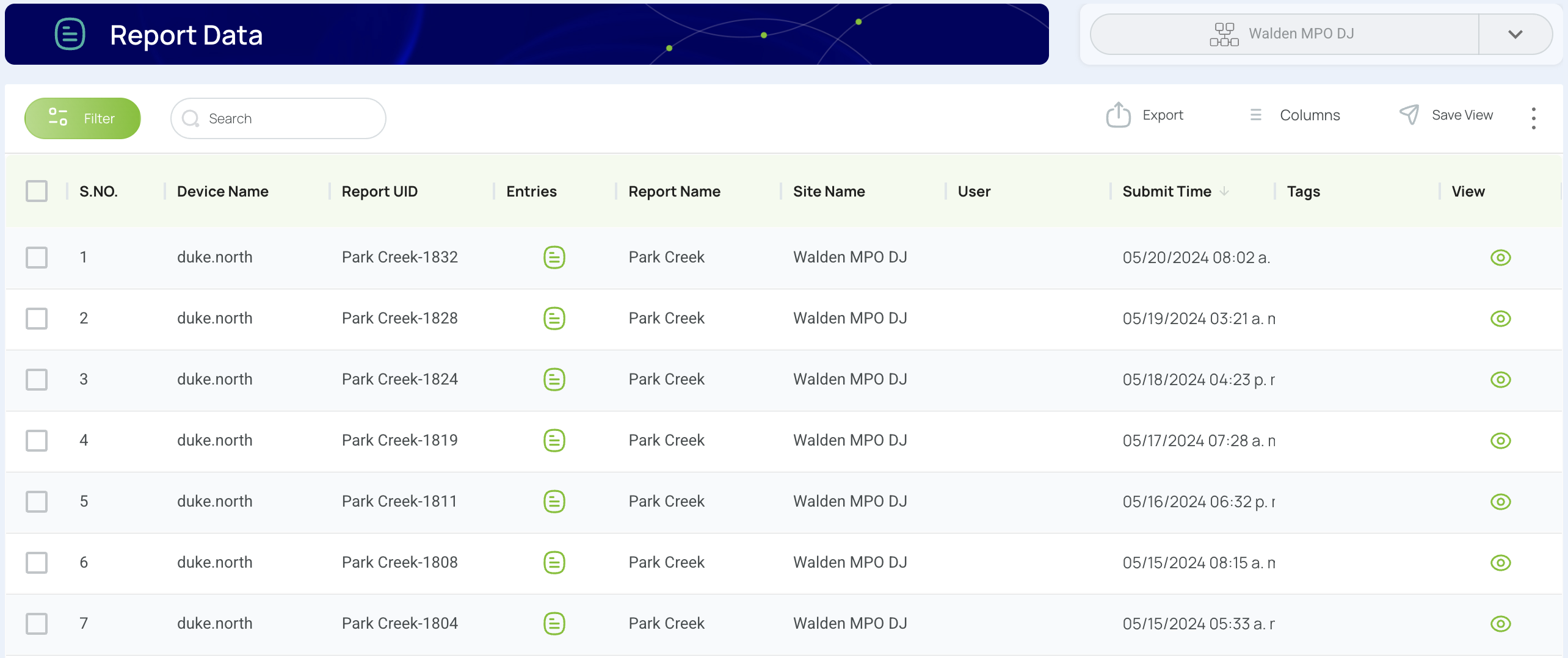
TipHover and click over a filter-chip to see every value selected:
Save View
Lock in your favorite combination of filters and columns.
- Apply the filters you need.
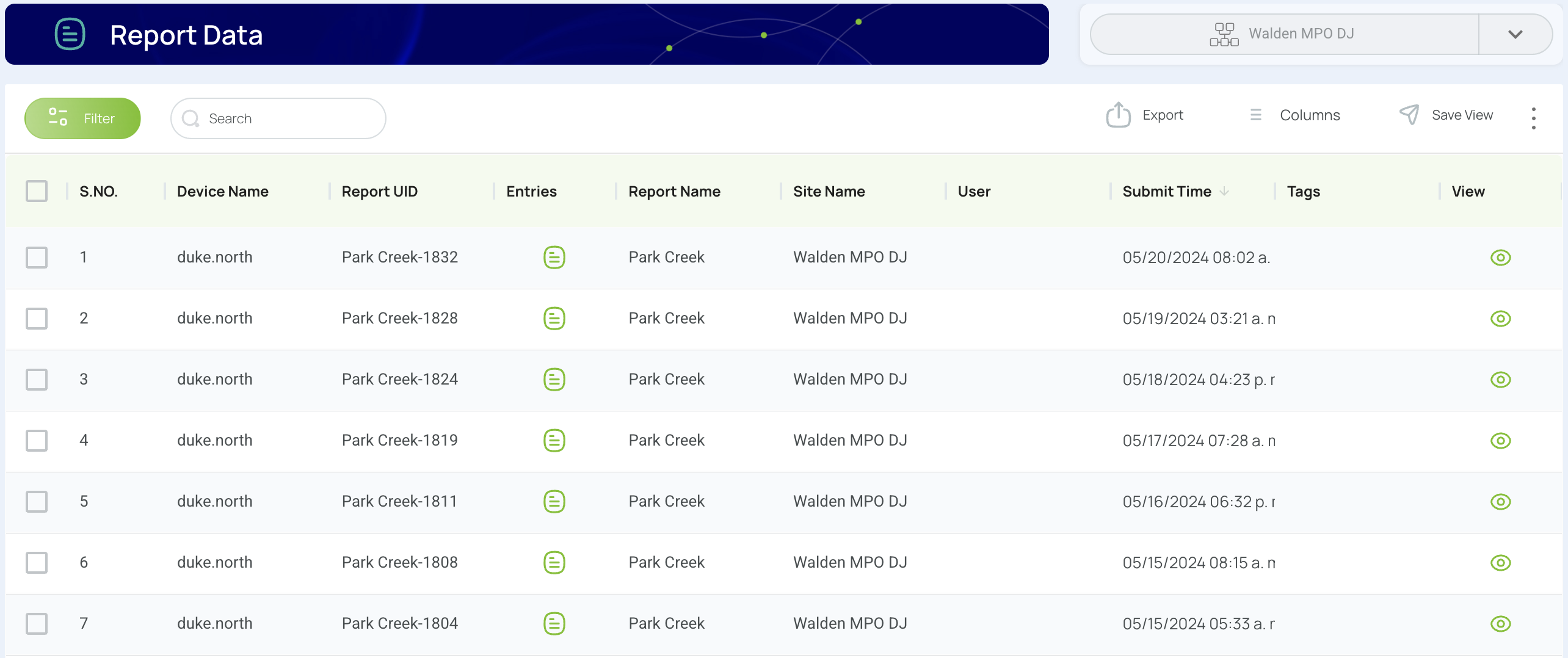
- Click Save View.
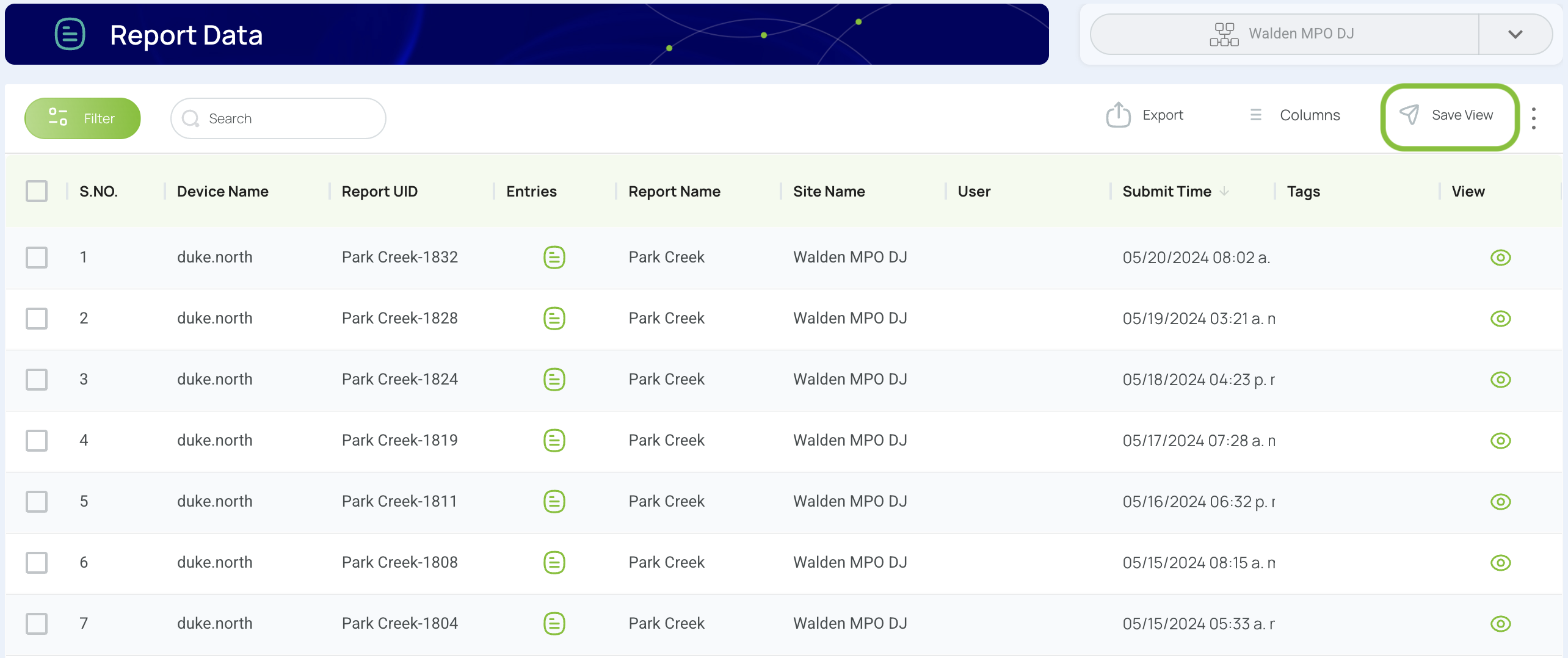
- Give the view a name, choose an icon and color, then save.

- Your view now lives under Favorites in the left pane.
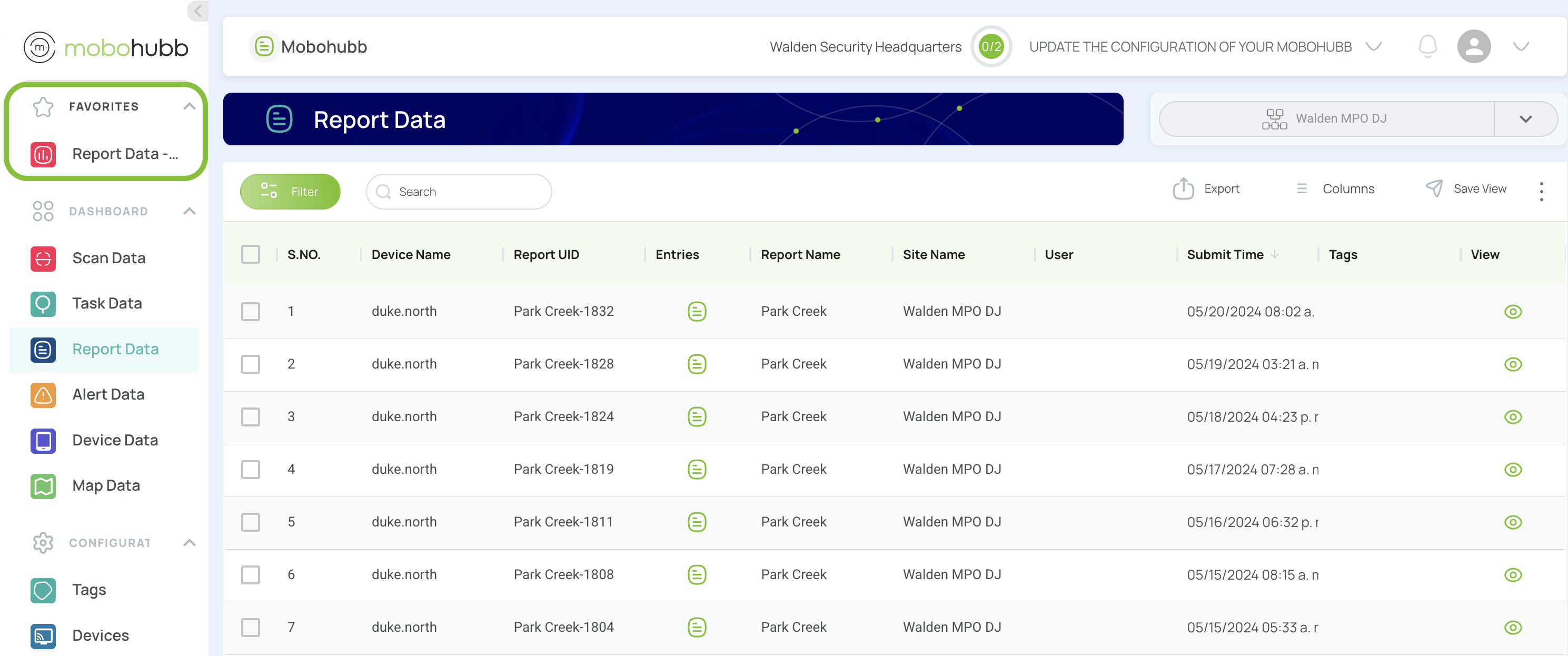
Restore View
Using Restore View
- Click the ⋮ menu and choose Restore View.

- All filters, column changes, and sorts revert to default.
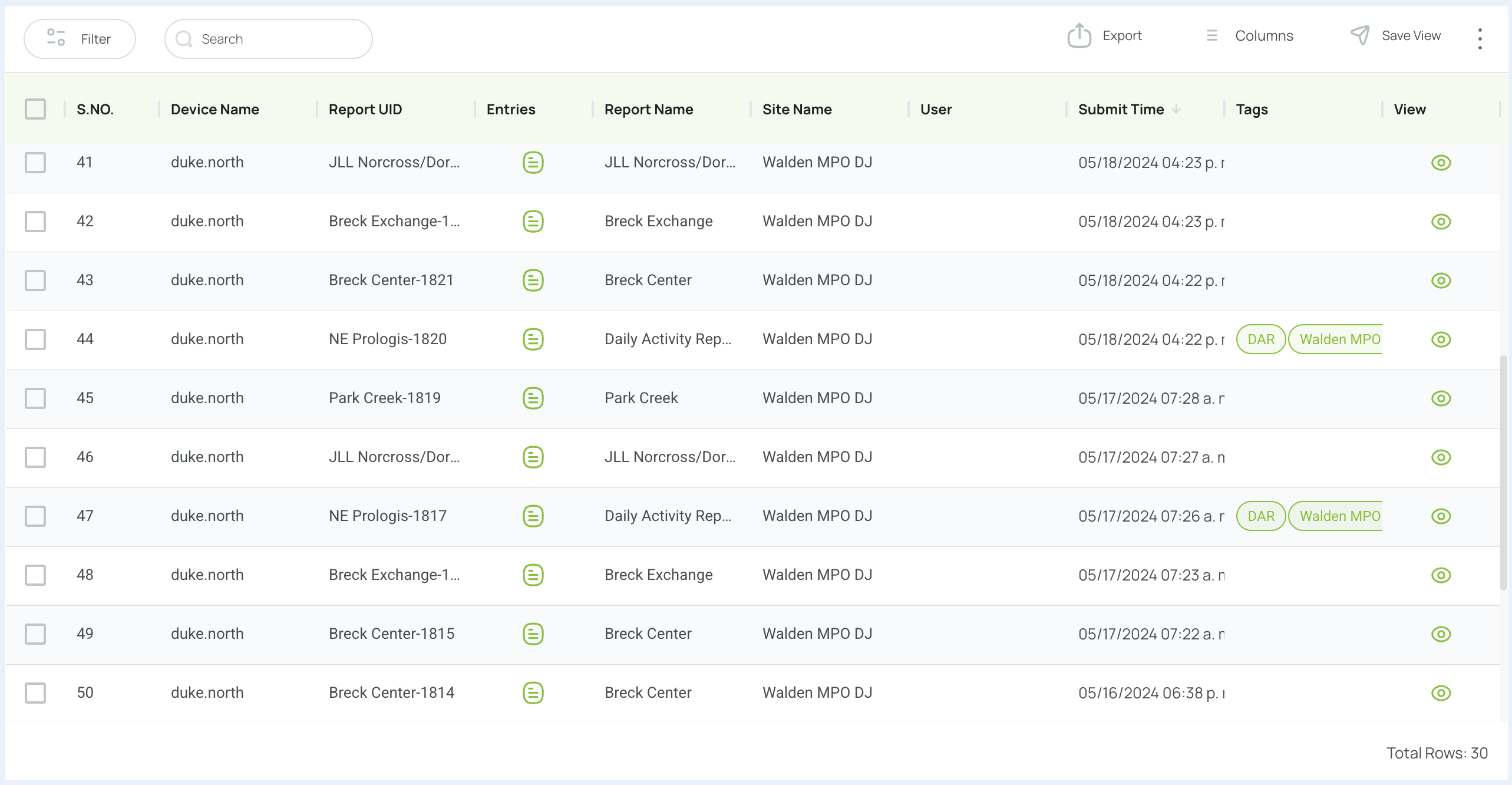
Clearing Individual Filters
Locate the blue filter-chips at the top of the table and click × to remove each one.
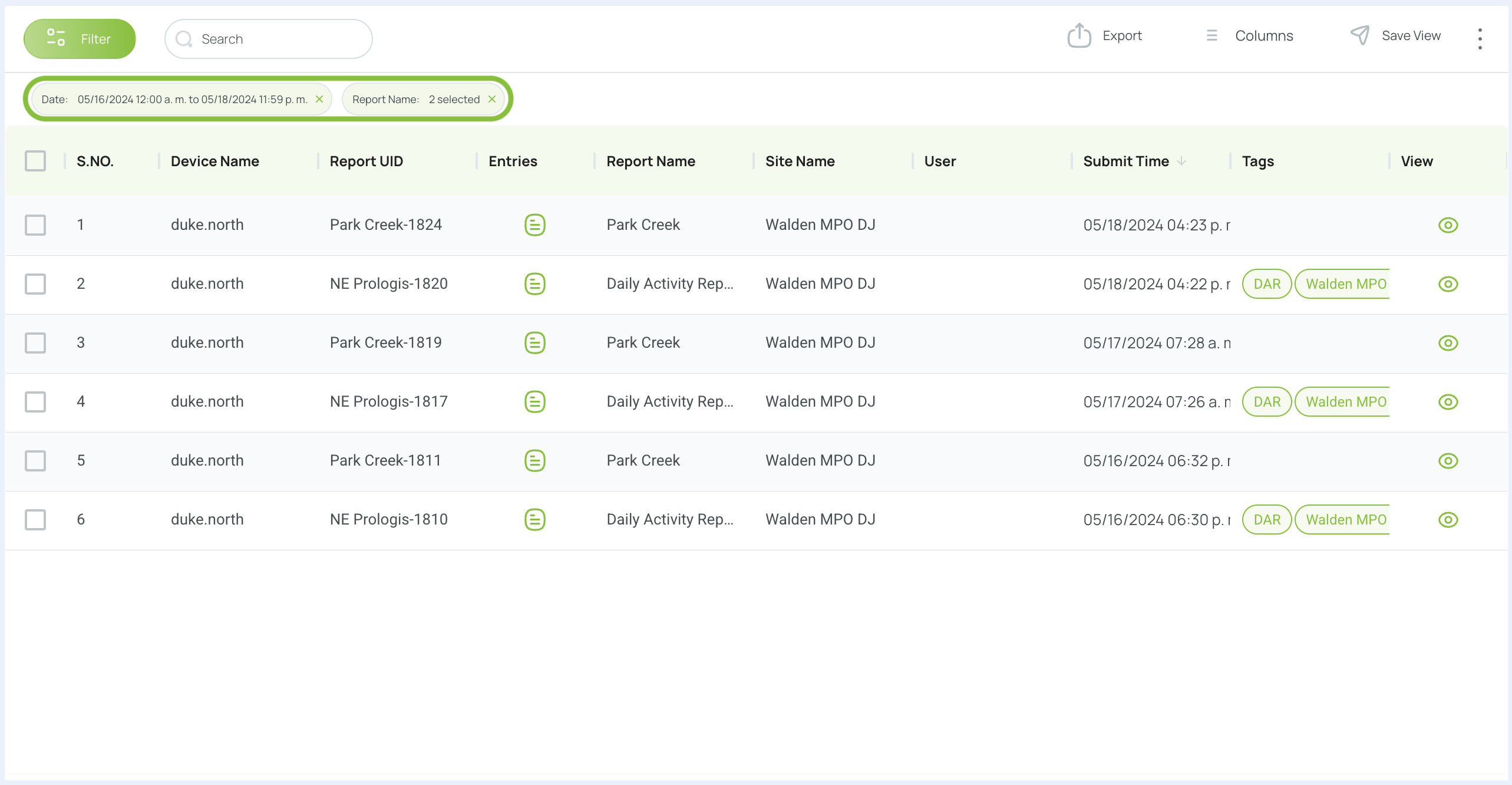
The grid updates right away, restoring the hidden rows.
Clearing All Filters
- Go to Filter and press the return button.
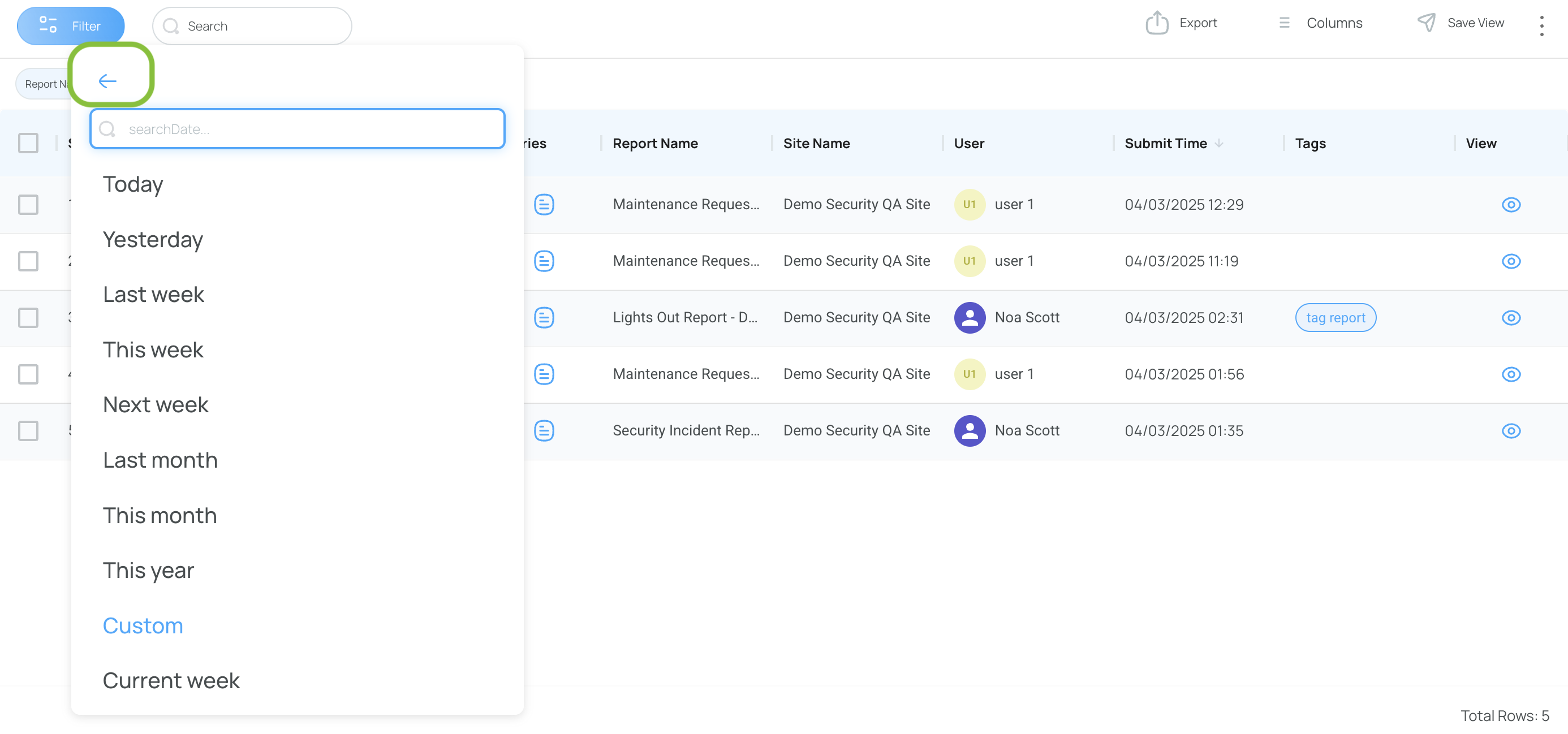
- Press Clear All.
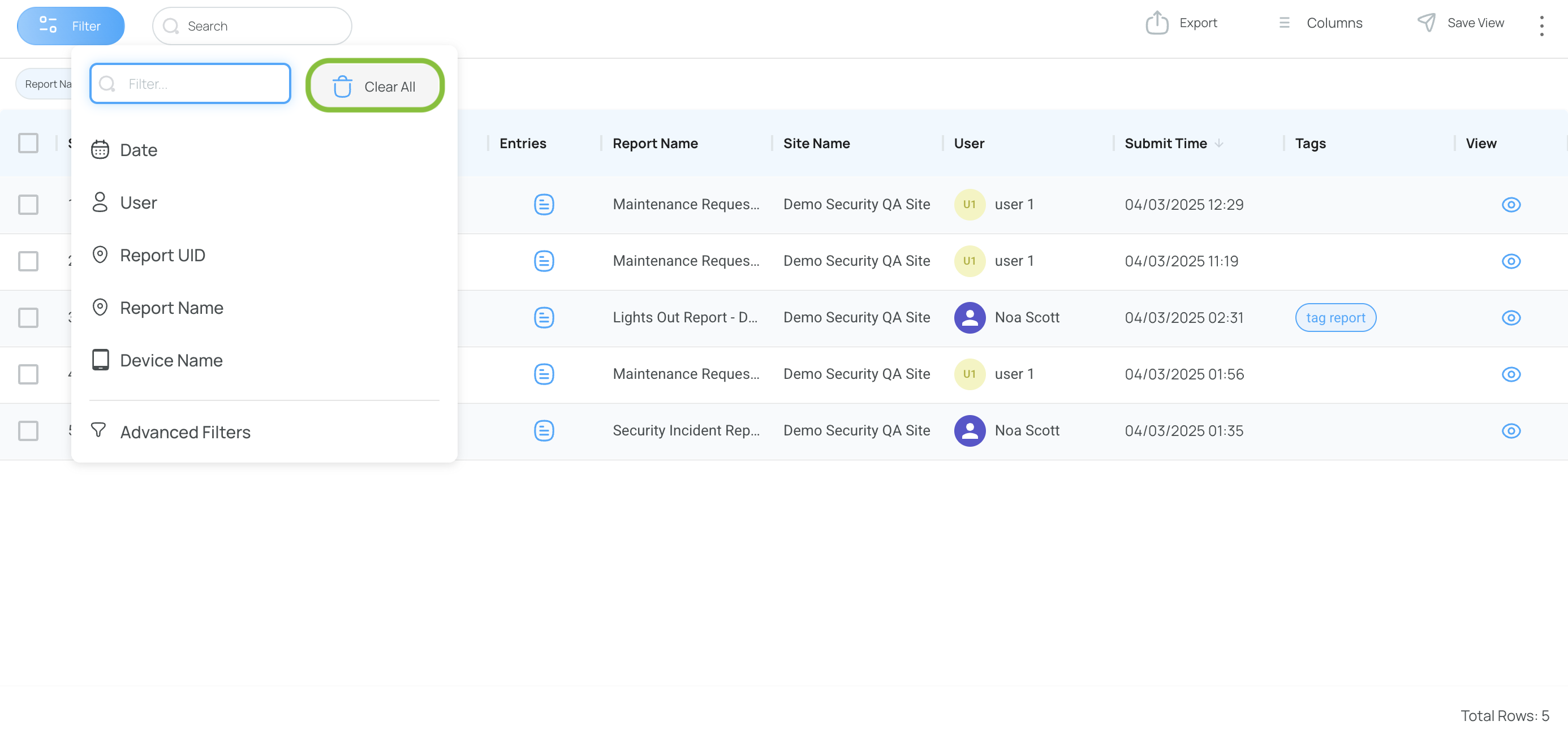
- The list will return to default.
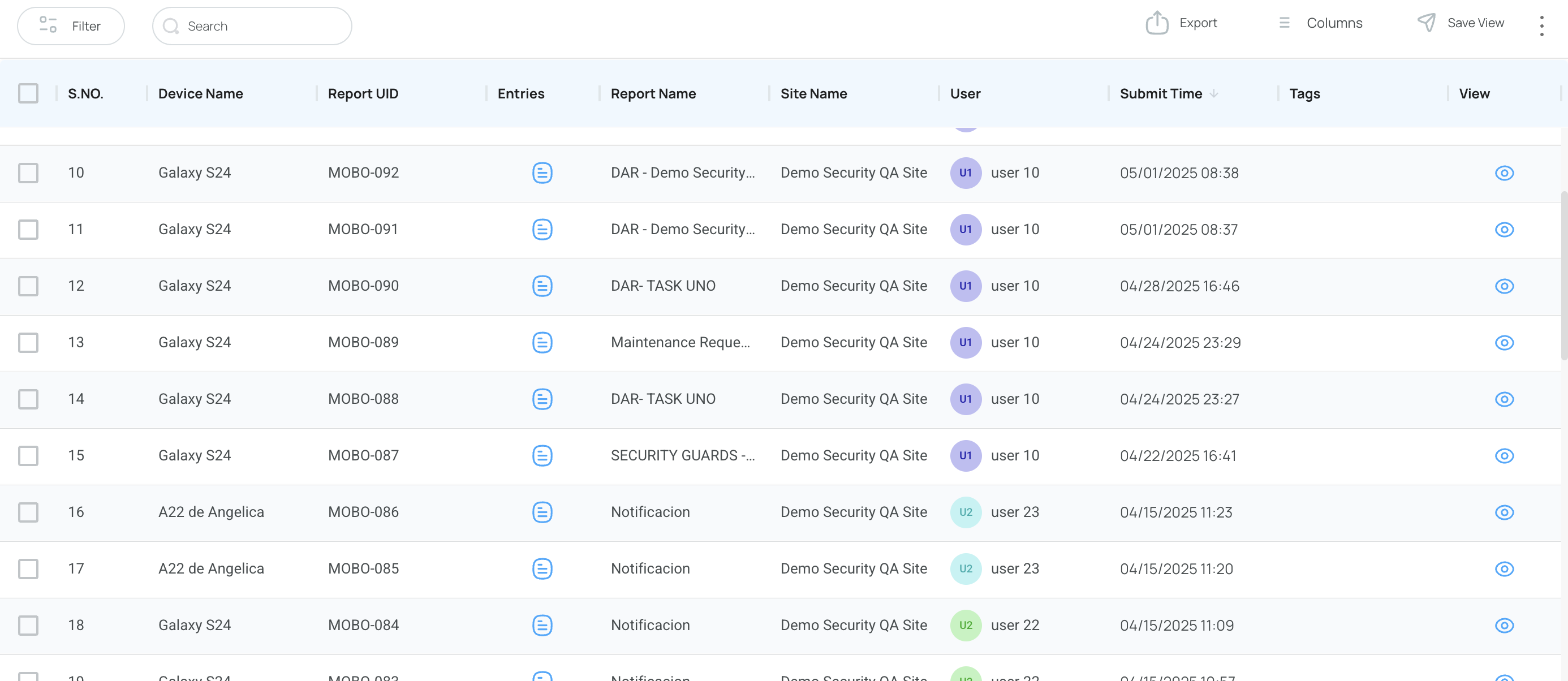
Updated 7 months ago
